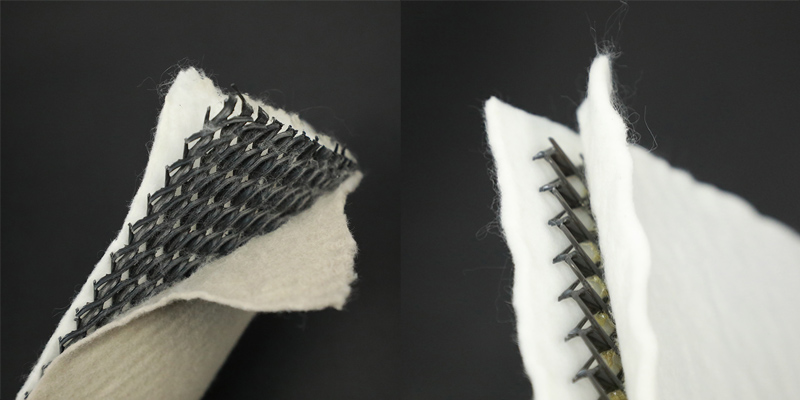Composite geonets combine the benefits of geotextiles and geonets, creating a versatile material with key characteristics that make it suitable for various applications in civil engineering and environmental projects. Here are some key characteristics and applications of composite geonets:
Key Characteristics:
- Drainage Capacity:
- Composite geonets typically feature a net-like structure that enhances drainage capabilities. This is crucial in applications where effective water drainage is required.
- Filtration:
- The geotextile component in the composite geonet provides filtration capabilities, preventing soil particles from clogging the drainage pathways. This helps maintain the long-term efficiency of the drainage system.
- Reinforcement:
- Geonets contribute to the mechanical strength and reinforcement of the composite material. This reinforcement is valuable in applications where soil stabilization and load distribution are important.
- Separation:
- The geotextile layer helps in separating different soil layers or materials, preventing mixing and maintaining the integrity of the construction project.
- Erosion Control:
- Composite geonets can be used in erosion control applications, providing stabilization to slopes and preventing soil erosion.
- Chemical Resistance:
- Depending on the specific materials used, composite geonets may exhibit resistance to chemicals and biological degradation, ensuring longevity in harsh environmental conditions.
- Customization:
- Composite geonets can be designed with specific properties to meet the requirements of a particular project. This includes tailoring the drainage capacity, filtration characteristics, and overall strength.
Applications:
- Landfill Liners:
- Composite geonets are commonly used in landfill liner systems to facilitate leachate drainage and prevent the contamination of underlying soils and groundwater.
- Road Construction:
- In road construction, composite geonets are employed for soil stabilization, reinforcement, and drainage, helping to enhance the performance and longevity of roads.
- Retaining Walls and Slope Stabilization:
- The reinforcement properties of composite geonets make them suitable for use in retaining walls and slope stabilization projects.
- Erosion Control:
- Composite geonets can be applied in erosion control measures, such as protecting embankments, shorelines, and riverbanks from soil erosion.
- Drainage Systems:
- These materials are commonly used in subsurface drainage systems for sports fields, agricultural fields, and other areas where excess water needs to be efficiently managed.
- Environmental Protection:
- Composite geonets contribute to environmental protection by preventing soil erosion, controlling sediment runoff, and improving overall soil stability.

It’s important to note that the specific characteristics and applications of composite geonets can vary based on the manufacturer and the intended use of the material in a particular project. Engineers and designers should consider project-specific requirements when selecting and implementing composite geonets.
